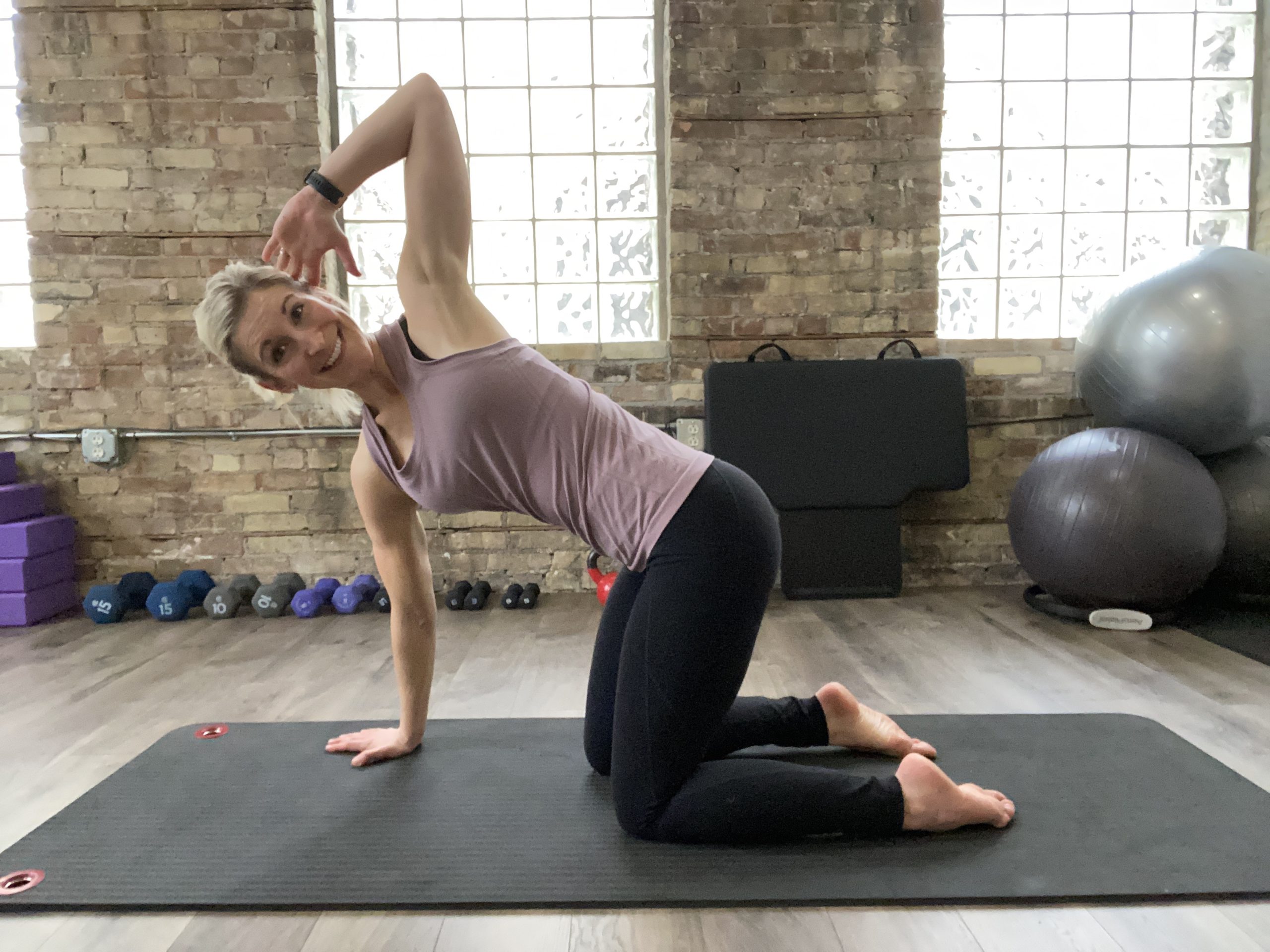Wondering how you can best start getting back into movement and exercise after just having a baby? Regardless of whether you had a vaginal or C-section birth, these are the very first things we suggest within the first 6-8 weeks postpartum BEFORE getting back into more strenuous fitness and exercise again.
diaphragmatic breathing
Breathing from your diaphragm is very challenging during pregnancy…that little love bug tends to get in the way of taking full diaphragmatic breaths during third trimester. So it is important to re-establish movement and use of the diaphragm in the early weeks after giving birth. Breathing from your diaphragm has many benefits, including stress relief, relaxation, core strength, postural stability, bladder & pelvic floor control, pain relief and optimal lung capacity. Oh my!
The Technique:
Imagine you could breathe IN and expand your lungs and rib cage outward in ALL directions (360 degrees). As you exhale, feel a gentle and natural recoil inward back towards center. Focus on your RIB CAGE expansion and movement more than your belly or chest movements.
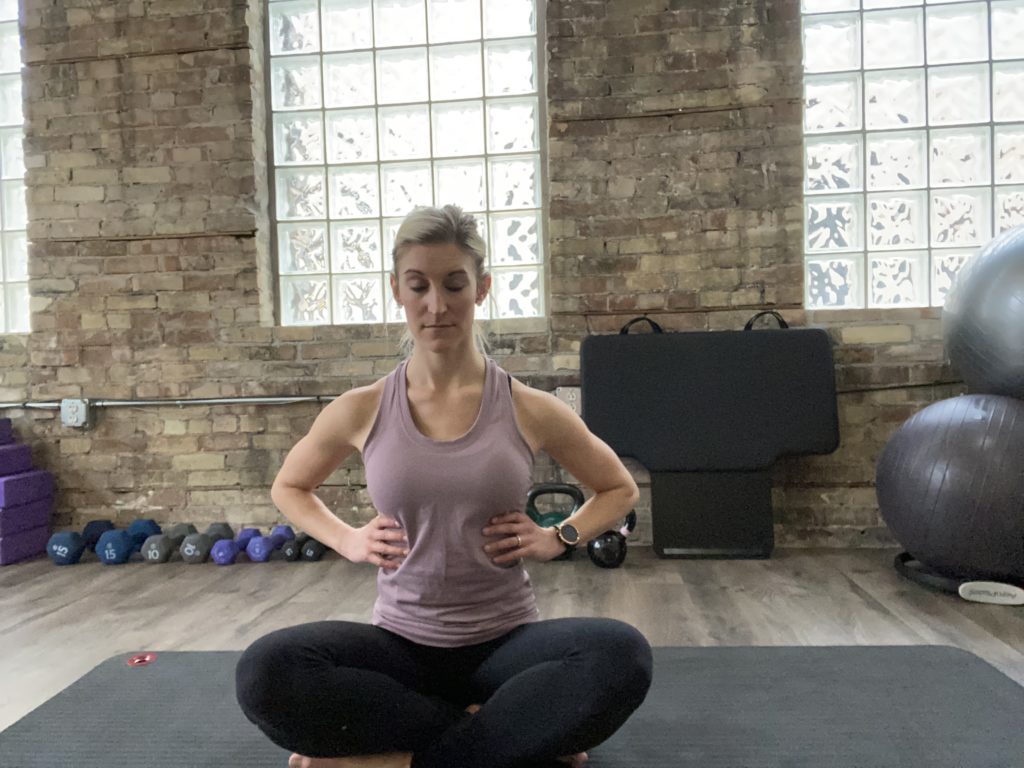
cat cow
These popular movements found in yoga, pilates and other fitness routines are extremely beneficial in moving and stretching your spine…specifically into flexion and extension. With all of the extra sitting and laying around, this is great to get your spine and body moving again – alleviating aches, pains and stiffness!
This can be a great opportunity for playtime with your baby too! Place baby between your hands and let them watch you smile, giggle and move between these two movements. Don’t forget to incorporate your diaphragmatic breathing and core engagement while you move between cat to cow.
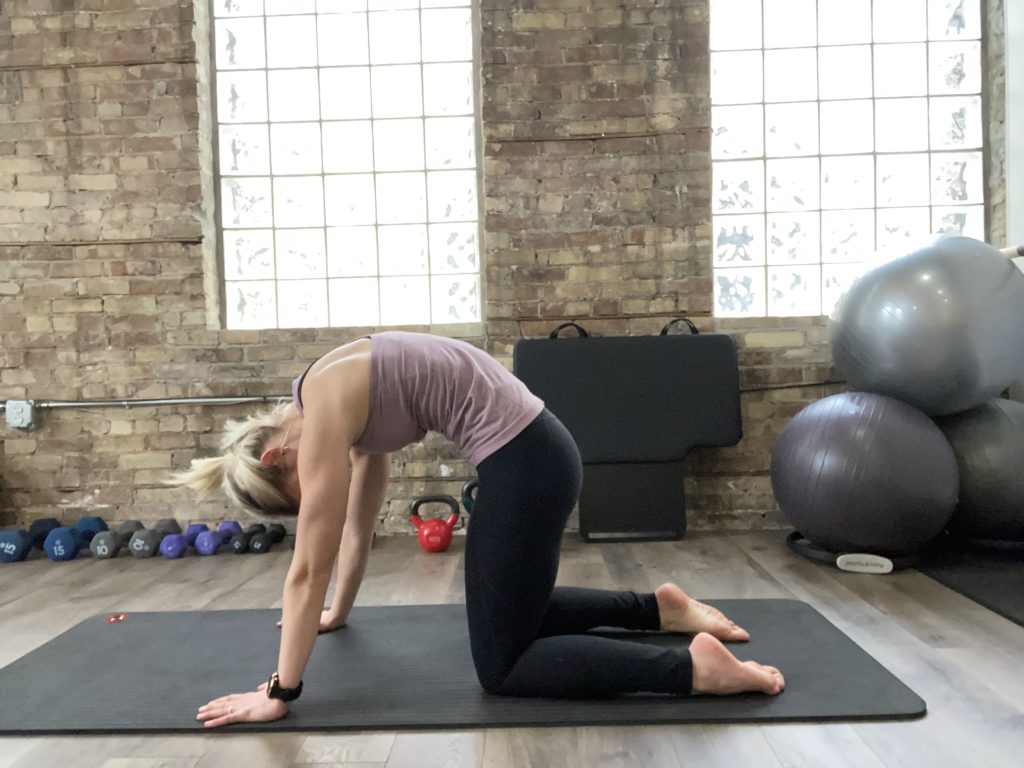
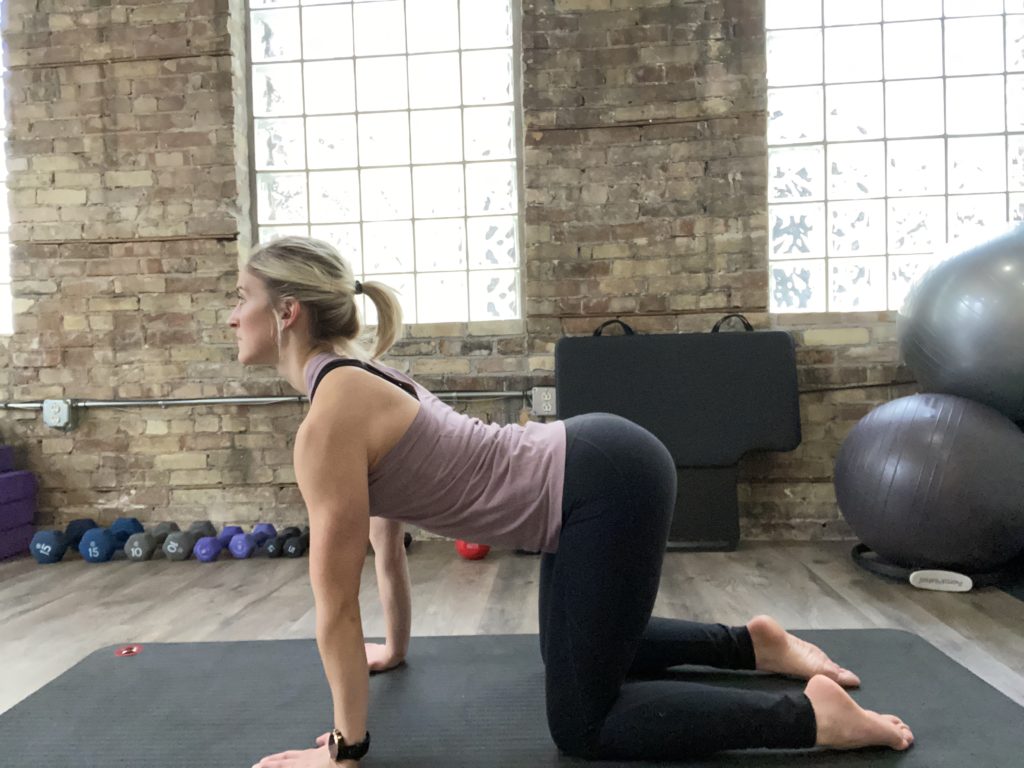
thoracic spine rotation
With all of the feeding, carrying and holding, your upper back, shoulders and neck take a real beating. Thoracic spine (your middle back) can easily become tight, restricted and painful during this time period. By keeping your upper back moving, you can avoid excess tension and pain in these surrounding areas. The thoracic spine LOVES to rotate! Again, another great opportunity for some playtime with baby while you do some great movement for your body.
Be sure to check out our full video tutorial to see the 2 different versions of thoracic rotation we recommend. Subscribe to access HERE!
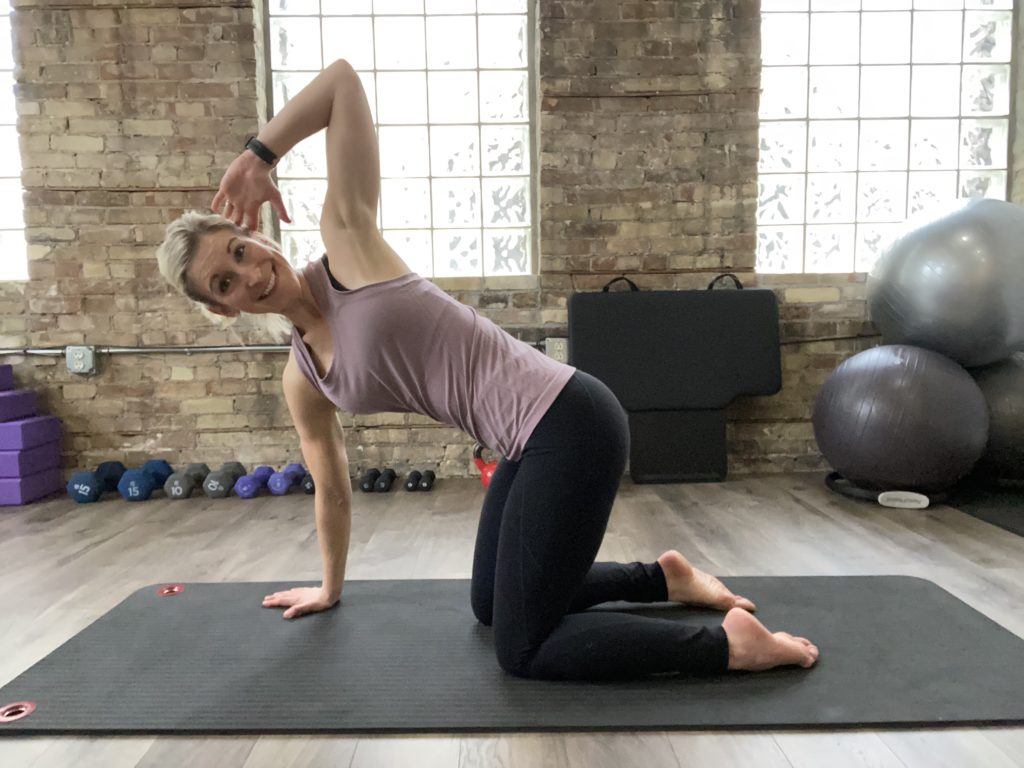
pec stretching
Another strategy to combat all those hours of feeding, carrying and holding baby. The muscles along the front of our chest, known as the pectoralis major and minor muscles (“pecs” for short), become extremely strong and tight. Opening up and stretching through your chest is super important to avoid pain and improve posture.
We really favor the use of a long 36″ foam roller for this one. If you don’t have a long foam roller at home you could substitute with a wall space or doorway instead. Place your arm and elbow in a goal post shape against the wall or doorway and then gently lean your body forward to open up and stretch your chest. The shower can be a great space to get some quick stretching in!
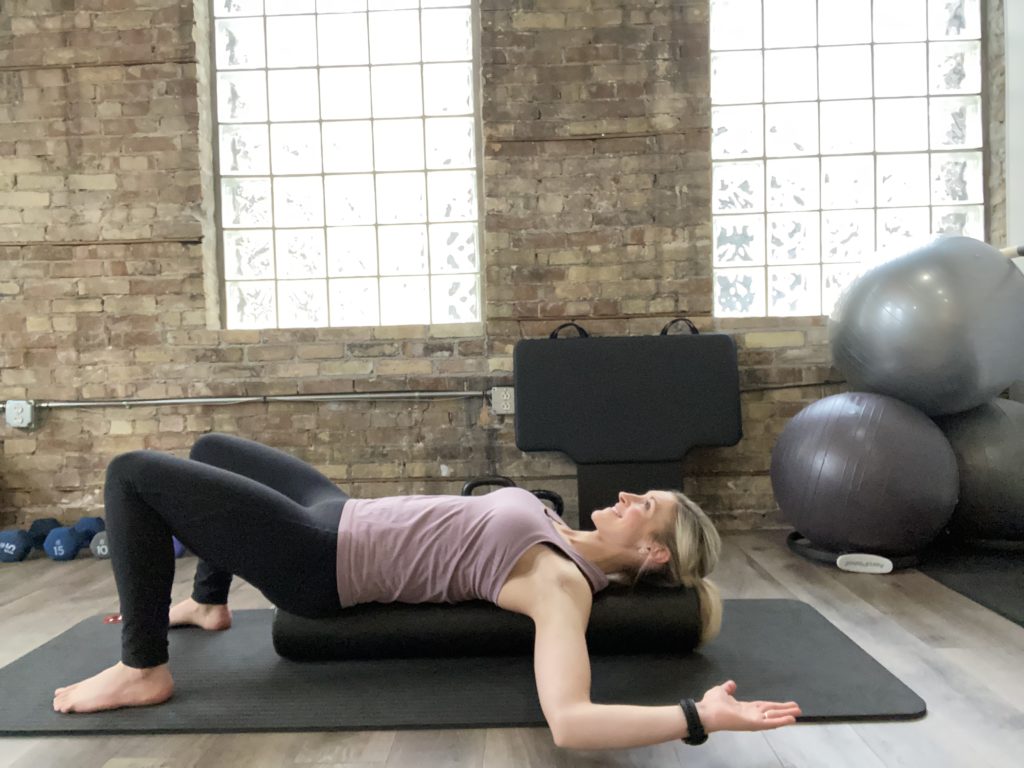
bridging
Here is our first strengthening recommendation during this phase! Bridges are one of our favorite early postpartum exercises. These are incredibly beneficial in activating the glute, core, pelvic floor & diaphragm muscles. We view it as an all inclusive exercise!
Very beneficial exercise for those who struggle with pelvic organ prolapse (pelvic floor weakness and pressure), diastasis rectus abdominis (abdominal separation), urinary leakage, and low back pain and pubic bone pain.
Be sure to place something between your knees to help stabilize and support your pelvis and assist in activating these 3 important muscle groups. A small pilates or child’s playground ball, paper towel roll and/or throw pillow can work well!
Be sure to subscribe and check out our full video tutorial for how to best activate these muscles during your bridges!
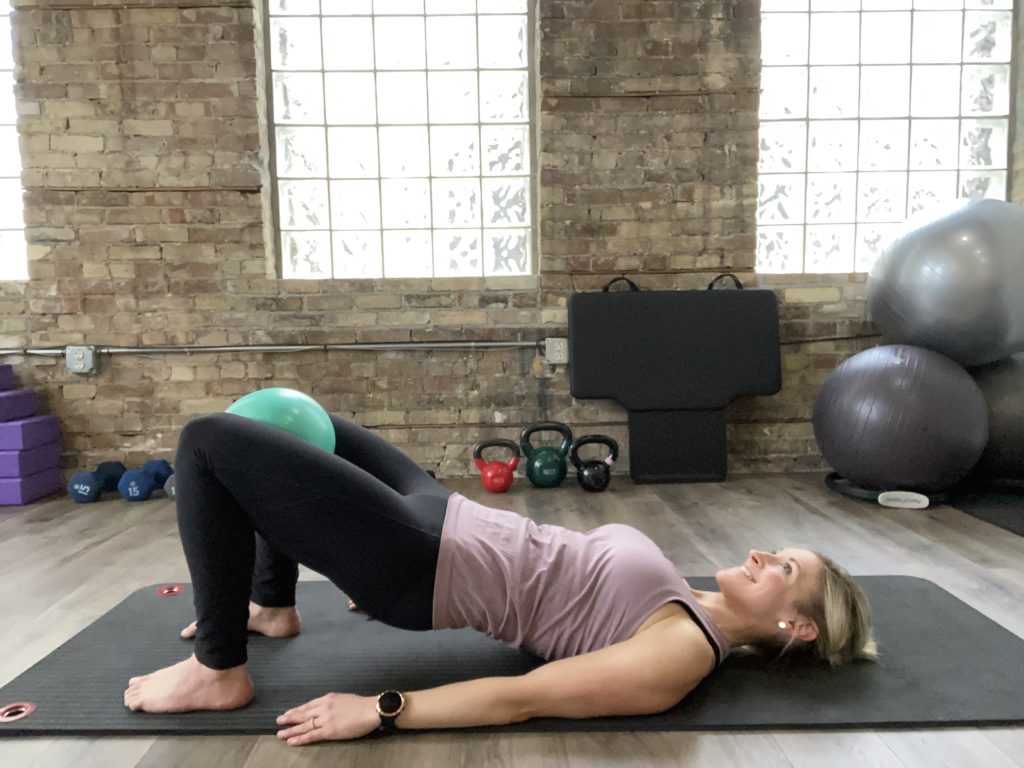
walking
Yes, walking! We recommend starting to walk around inside your home starting at weeks 2-4 postpartum. This can include things such as doing basic chores (without heavy lifting) and going up and down the stairs a few times per day. Prior to this, you should be spending most of your time in an and out of bed or the couch the first 2 weeks after giving birth. Remember, you just carried a child for 9 months and then birthed it…your body deserves the extra TLC and healing time! Take it slow and listen to your body.
At 4-6 weeks postpartum, if you are doing well and ready to expand your walking, you can start going for a slow and steady walk around the neighborhood (outside your home) a few days per week. We recommend starting with a slow 15-20 minute walk, every other day, and see how that feels. If you are pushing a stroller, just keep in mind that this is extra effort and weight and should be considered more challenging. Try and stay close to home the first few times you venture out. That way if you have any trouble you can easily make it back home safely and rest. Walk the blocks in your neighborhood or if you have a treadmill at home, that’s great too, but keep the speed slow and controlled.
Red flag symptoms you should look out for and avoid during ANY FORM of exercise in these early postpartum phases are, PAIN and/or PRESSURE in your pelvis, abdomen or low back. This includes symptoms that you encounter during or after exercise. If these symptoms occur, be sure to decrease the intensity of whatever you are doing and seek out professional help from a Women’s & Pelvic Health Physical Therapist. These symptoms should not be ignored and may indicate a core or pelvic floor problem that needs to be addressed before progressing exercise any further.
Now remember, these are suggestions for the very first place to START moving your body again after birth. Once you have done these successfully and can check off the boxes, then you can start progressing to more advanced strengthening and strenuous exercise…GRADUALLY! We have recommendations for this phase as well…
Everyone has a beautifully unique pregnancy and birth story, so don’t forget that your healing journey will be unique as well. It took 9 months to nurture and grow a baby and several hours of labor and delivery. It may take several months to get back to feeling like yourself from a fitness perspective. Take it slow and listen to your body!
To view our full Video Tutorial of these exercises… click HERE to subscribe!
